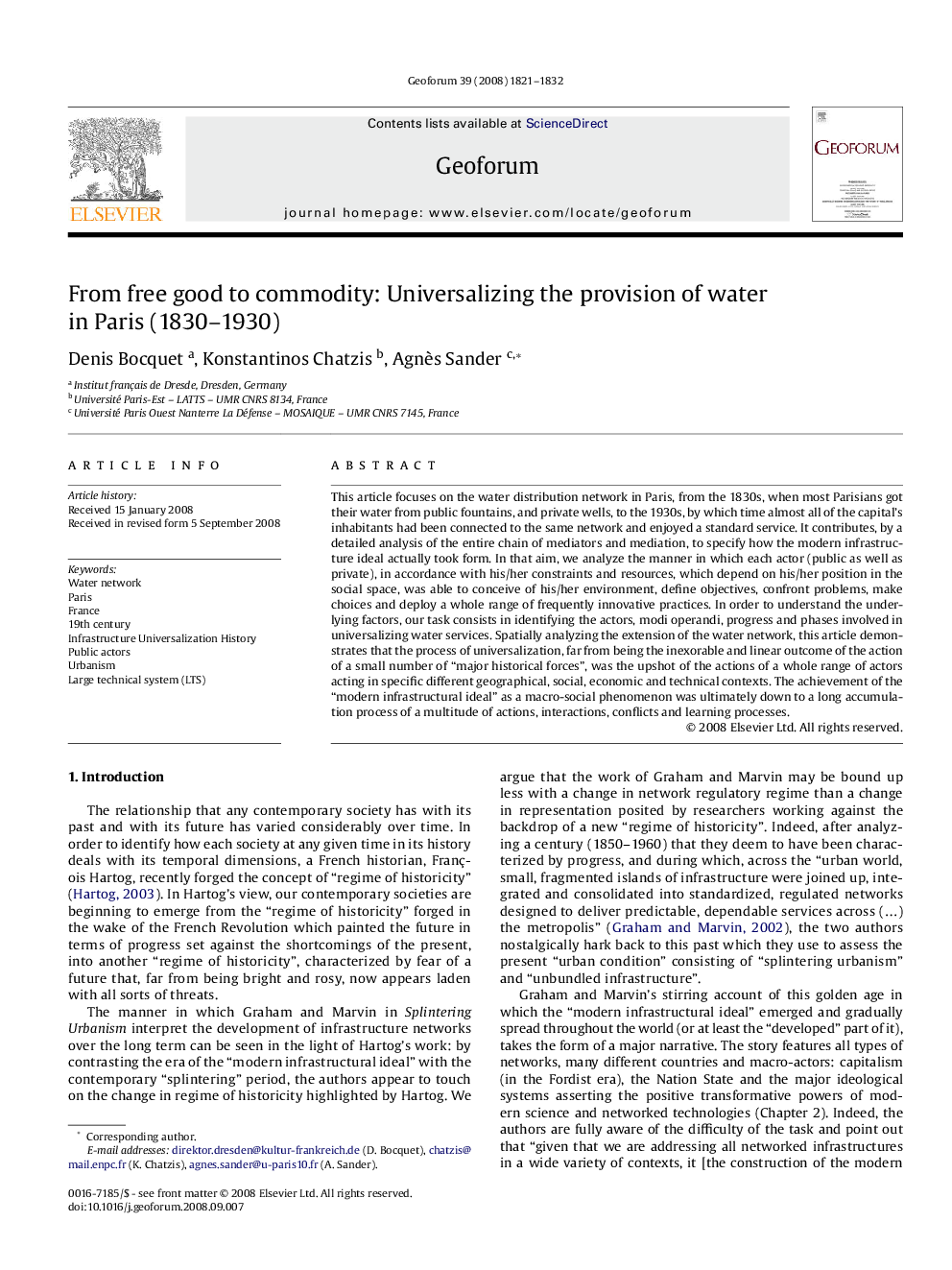| Article ID | Journal | Published Year | Pages | File Type |
|---|---|---|---|---|
| 5074836 | Geoforum | 2008 | 12 Pages |
Abstract
This article focuses on the water distribution network in Paris, from the 1830s, when most Parisians got their water from public fountains and private wells, to the 1930s, by which time almost all of the capital's inhabitants had been connected to the same network and enjoyed a standard service. It contributes, by a detailed analysis of the entire chain of mediators and mediation, to specify how the modern infrastructure ideal actually took form. In that aim, we analyze the manner in which each actor (public as well as private), in accordance with his/her constraints and resources, which depend on his/her position in the social space, was able to conceive of his/her environment, define objectives, confront problems, make choices and deploy a whole range of frequently innovative practices. In order to understand the underlying factors, our task consists in identifying the actors, modi operandi, progress and phases involved in universalizing water services. Spatially analyzing the extension of the water network, this article demonstrates that the process of universalization, far from being the inexorable and linear outcome of the action of a small number of “major historical forces”, was the upshot of the actions of a whole range of actors acting in specific different geographical, social, economic and technical contexts. The achievement of the “modern infrastructural ideal” as a macro-social phenomenon was ultimately down to a long accumulation process of a multitude of actions, interactions, conflicts and learning processes.
Related Topics
Social Sciences and Humanities
Economics, Econometrics and Finance
Economics and Econometrics
Authors
Denis Bocquet, Konstantinos Chatzis, Agnès Sander,
